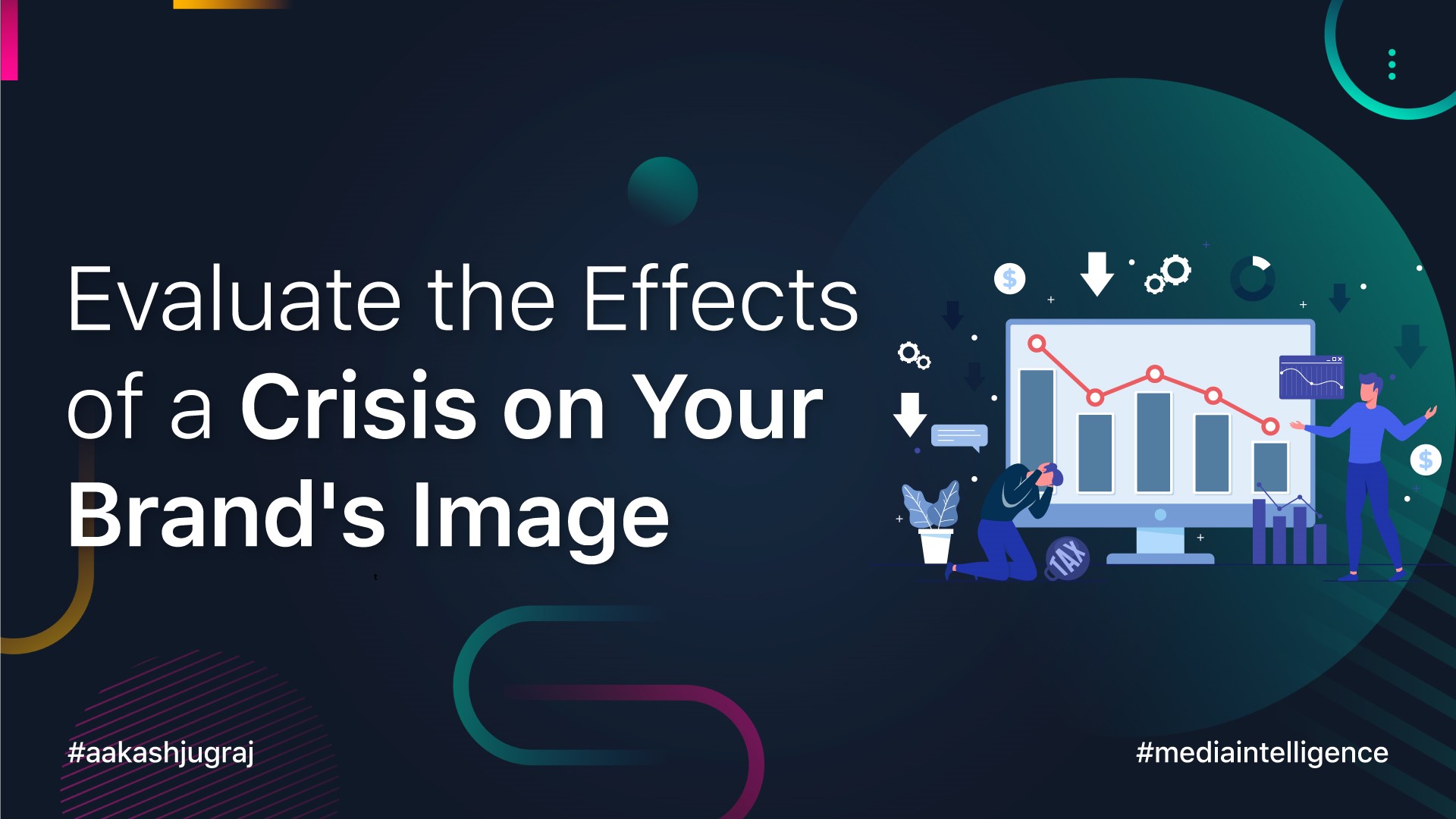Evaluate the Effects of a Crisis on Your Brand’s Image
admin
October 22, 2021
Media Intelligence: Evaluate the Effects of a Crisis on Your Brand’s Image
A single event on social media may swiftly turn into a catastrophe, harming a company — not just in terms of perception but also in terms of revenue – that will be remembered for years.
While a corporation might improve its brand reputation through content and branding initiatives, consumers’ views and experiences ultimately form the brand’s perception.
Therefore, marketers must be highly attentive to safeguard their brand during and after a crisis, not just during the crisis but even after it has gone.
Follow These Indicators
In a crisis, it’s critical to move fast and pay close attention to the smallest details. A crisis watch is necessary to keep us informed about our consumers’ feelings, direct our communication efforts, and suggest new media to target.
As a result, we can begin by keeping an eye on both the news and social media. Even if your company doesn’t have a strong social media presence, this is frequently where crises are addressed, so it’s critical to stay up to date on what’s being said.
Media coverage’s evolution and breadth
How many messages and articles have been published about your crisis? How much of your situation is covered by the media compared to your typical coverage? On which days did the message peaks occur?
Feeling
Your negative hedge will be substantially larger than usual during a crisis. The task will be to bring this rate of negative mentions back to normal. As a result, it’s critical to keep track of your brand’s sentiment score during the crisis.
SEO and keywords
The keywords reveal how people feel about your company during and after a crisis. To swiftly obtain branding information, use a social media monitoring programme to conduct the following:
- Determine the most important topics: What are the most common concerns? Is your brand associated with the crisis?
- Hashtags to Consider: It’s very uncommon for customers to band together and use a pejorative hashtag to designate their concerns. Over time, keep track of these hashtags for more information than just brand endorsements or consumer feedback on your brand’s social media pages.
Press and Social Media as Key Trends
It’s crucial to know how the media and the general public feel about your crisis scenario before deciding on the best course of action.
What are the most popular subjects? Differentiate between the impact of the press and social media, as the content aired on these two channels might be extremely different.
This indicator will be useful to monitor during your crisis management to ensure that your response is properly integrated by your community and, if necessary, to change.
Influencers and Sources of Information
Who are the primary media outlets covering your crisis? Are they sceptics or promoters?
You may prioritise your message by finding media and influencers who are interested in your company. Determine the best way to express gratitude to heroes and positive spokespeople throughout the crisis.
The Most Popular Social Media Posts
Which of your crisis-related social media publications had the biggest impact (engagement, sharing, etc.)?
You’ll be able to spot the people who are spreading the word about your dilemma, as well as the points of view that are eliciting the greatest agreement.
Scope of geography
Is your crisis local, national, or international in scope?
The most recent information
Because every piece of information might be crucial in a crisis, it’s necessary to have a real-time news stream at your fingertips.
read more: How Data-Driven Marketing Influence Consumer Behavior Understanding?
Recent Posts
-
Media Intelligence: What is persona mapping, and why is it essential for your brand?03 Nov 2021
-
Media Intelligence: Digital Transformation Crucial For Customer Experience03 Nov 2021
-
Media Intelligence: How to Begin a Social Listening?03 Nov 2021
-
Media Intelligence: Why Brand Ambassadors Are Important?03 Nov 2021
Categories
Have Any Question?
- (+62)81 652 4689
- [email protected]



